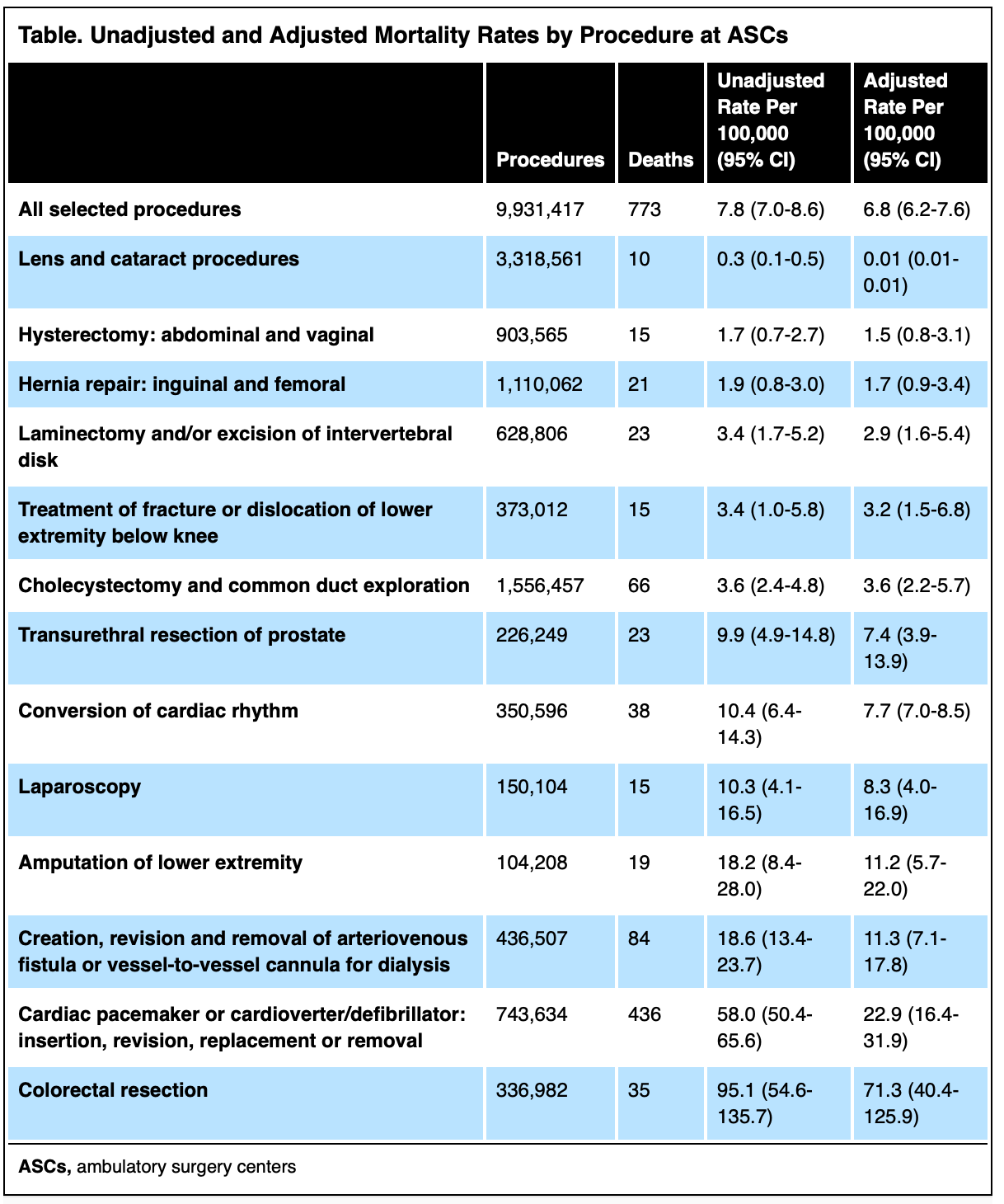Most unsurprising study of the day
-
"Ambulatory surgery centers are generally safe, but mortality is different for different procedures."

Overall, the 2016-2018 data sets contained 31,889,894 records. Of these, 10,744,035 were from patients over 17 years of age who underwent a primary procedure in one of the selected categories. The final study cohort comprised 9,931,417 records of patients with discharge disposition and no DNR status.
According to Gupta, death was noted in a total of 773 patient records, yielding an unadjusted mortality rate of 7.8 per 100,000 records (95% CI, 7.0-8.6/100,000). After adjustment for several potential confounding variables, the mortality rate was 6.8 per 100,000 records (95% CI, 6.2-7.6/100,000).
However, mortality rates varied widely according to the type of procedure performed (Table).
“I was actually surprised at the wide variability in mortality rates that our analysis revealed,” Gupta told Anesthesiology News. “We knew that lens replacement was going to be associated with very low risk. However, I was surprised that colorectal resection [mortality] was so high, even when compared with something like pacemaker procedures.”